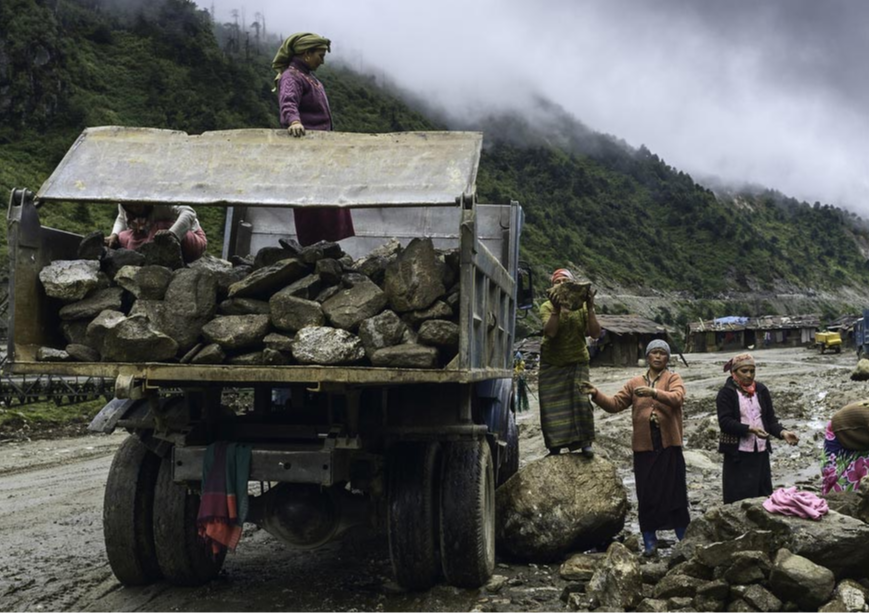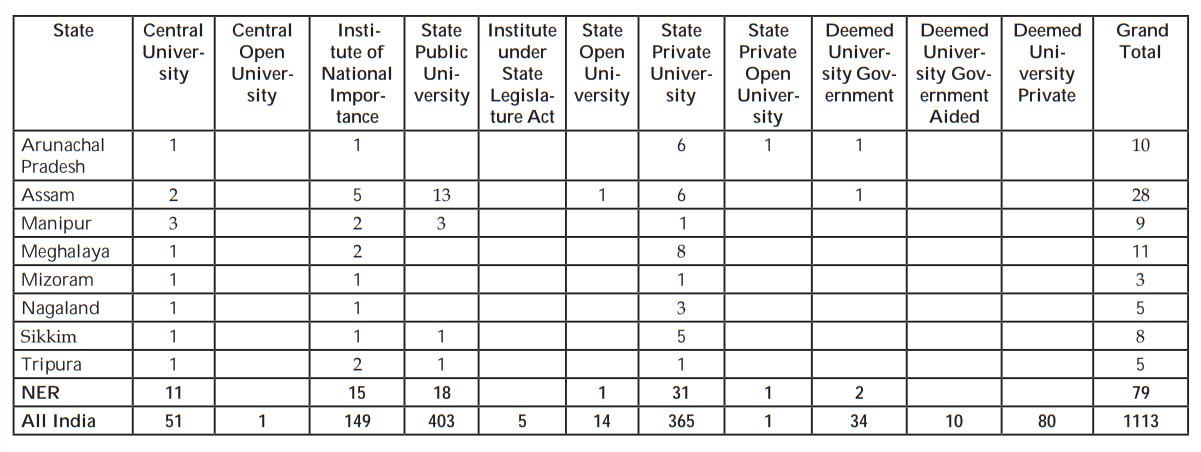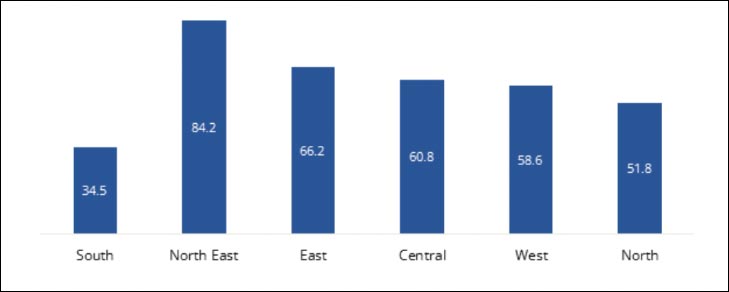
India's Northeast, with its rich cultural diversity and natural resources, stands as a promising frontier for targeted development. Despite its vast potential, the region trails behind the national average in several human development indices, contributing only 2.8 percent of India’s GDP. A strategic approach is imperative to catalyse holistic progress, focusing on bolstering human resources and fostering seamless integration with the Bay of Bengal economies. Collaborative endeavours with global partners in education, vocational training, healthcare, infrastructure, and digital advancements offer avenues for nurturing a skilled workforce, improving connectivity and Foreign Direct Investments (FDI), and fostering an entrepreneurial ecosystem. These efforts not only aspire to uplift the socio-economic landscape of the Northeast but also aim to amplify its significance within the broader Indo-Pacific narrative.
A strategic approach is imperative to catalyse holistic progress, focusing on bolstering human resources and fostering seamless integration with the Bay of Bengal economies.
-
Education and vocational training
Despite Northeast India showcasing a literacy rate comparable to the national average, its higher education sector faces significant challenges due to limited economic progress and a shortage of skilled labour, perpetuating a cycle of unemployment and hampering regional economic growth. The number of universities across levels is deficient for the region, accounting for only 7 percent of India’s total. Thus, revising curricula to align with global industry demands through partnerships with international universities, enhancing teacher training to incorporate innovative methodologies, establishing skill development programmes in collaboration with vocational institutions facilitated by organisations like the United States Agency for International Development (USAID), and promoting cross-cultural exchange and virtual learning platforms to broaden educational horizons are crucial. Efforts are essential to retain students and equip them with the skills needed for the evolving job market, ultimately fostering economic development and reducing the developmental gap between Northeast states and the rest of the nation.
Figure 1: Type-wise number of Universities in the Northeastern States

Source: Ministry of Development of North Eastern Region, Annual Report 2022-23
-
Strengthening healthcare
Survey data indicates that a staggering 84 percent of the Northeast’s population cite access to better medical treatment as their primary reason for migration. To address this issue, partnerships with national and international health organisations can facilitate knowledge sharing in critical areas like public health management, telemedicine, and disease prevention. Additionally, collaboration with medical technology firms can provide access to advanced medical equipment and diagnostics, improving regional healthcare delivery. Capacity building for medical personnel is also essential, with medical institutions offering training programs for doctors, nurses, and other healthcare professionals focusing on advanced techniques, research methodologies, and healthcare management.
Figure 2: Migration due to Serious Ailments in India (percentage of sample individuals surveyed)

Source: Development Intelligence Unit
-
Physical infrastructure investments
Upgrading infrastructure is crucial for seamless economic integration in India's Northeast, where inadequate physical and digital connectivity presents significant challenges. Targeted investments are needed across various sectors to address these gaps. In terms of physical infrastructure, investments in transportation networks are paramount. This includes developing and maintaining robust road and highway networks to connect major cities within the Northeast and establish links with neighbouring countries and trade centres along the Bay of Bengal. Public-private partnerships can attract private investments for these initiatives. Improving railways, leveraging waterways like the Brahmaputra River, and modernising airports are essential for efficiently moving goods and people.
Targeted investments are needed across various sectors to address these gaps. In terms of physical infrastructure, investments in transportation networks are paramount.
The Ministry of Road Transport and Highways and the Ministry of Development of the North Eastern Region have made significant contributions, with various projects to improve road networks. For instance, during the nine years (2014-2023), a total of 4,950 km of the National Highway Network was constructed, amounting to approximately INR 414.59 billion. Additionally, the North East Special Infrastructure Development Scheme (NESIDS) has been allocated a total budget of approximately INR 81.395 billion from 2022-23 to 2025-26, with specific funds set aside for road and other infrastructure components. Moreover, investments in renewable energy sources such as solar, hydro, and wind power are crucial to sustainably meeting the region's rising energy needs.
-
Digitisation and entrepreneurship
Investments in digital infrastructure are essential for the economic development and integration of India's Northeast, where digital inclusion remains a significant challenge. The region's internet subscription rate is 43 percent, below the national average of 55 percent. Strategies include expanding broadband connectivity to rural and urban areas through fibre optic cable networks and satellite internet and promoting digital literacy programs tailored to different demographics. Digital innovation and entrepreneurship are critical in driving economic growth, particularly in sectors like agriculture, healthcare, and tourism, thus creating jobs and diversifying the economy.
Skilling the workforce in digital technologies is paramount, with collaborations with global educational institutions offering specialised training programs fostering entrepreneurship.
Government initiatives such as tax exemptions for startups and streamlined regulatory structures provide incentives for innovation while facilitating access to capital through venture capital funds and international financial institutions, enabling startups to thrive. Skilling the workforce in digital technologies is paramount, with collaborations with global educational institutions offering specialised training programs fostering entrepreneurship.
-
FDI and strategic partnerships
According to the Department of Industrial Policy and Promotion under the Ministry of Commerce and Industries, while FDI in India has shown consistent growth over the years, investments in the Northeast region and Jammu and Kashmir have remained minimal compared to other parts of the country. During the period spanning from October 2019 to March 2022, FDI inflows into the Northeast remained insignificantly low, which is approximately 0.018 percent of the overall foreign investment.
Strategic partnerships with global stakeholders, particularly the United States and Japan, offer avenues for rejuvenating the region.
Thus, enhancing stakeholder involvement is pivotal for amplifying the impact of international partnerships in addressing the Northeast's investment challenges. Think tanks and other stakeholders are critical in facilitating needs assessments, partnership facilitation, and dissemination of best practices. Leveraging the expertise of esteemed international educational institutions and dynamic innovation environments can significantly enhance service quality and foster development in the Northeast.
In conclusion, building a supportive ecosystem for a favourable business climate and sustainable development in India's Northeast is paramount for viable economic growth. Strategic partnerships with global stakeholders, particularly the United States and Japan, offer avenues for rejuvenating the region. Collective endeavours across education, healthcare, infrastructure, and digital advancements hold promise for bridging developmental disparities and bolstering the Northeast's economic outlook.
The author acknowledges ORF intern and Pratham Ti Fellow, Arti Mahato, for her research assistance.
Soumya Bhowmick is an Associate Fellow at the Observer Research Foundation
The views expressed above belong to the author(s). ORF research and analyses now available on Telegram! Click here to access our curated content — blogs, longforms and interviews.






 PREV
PREV


